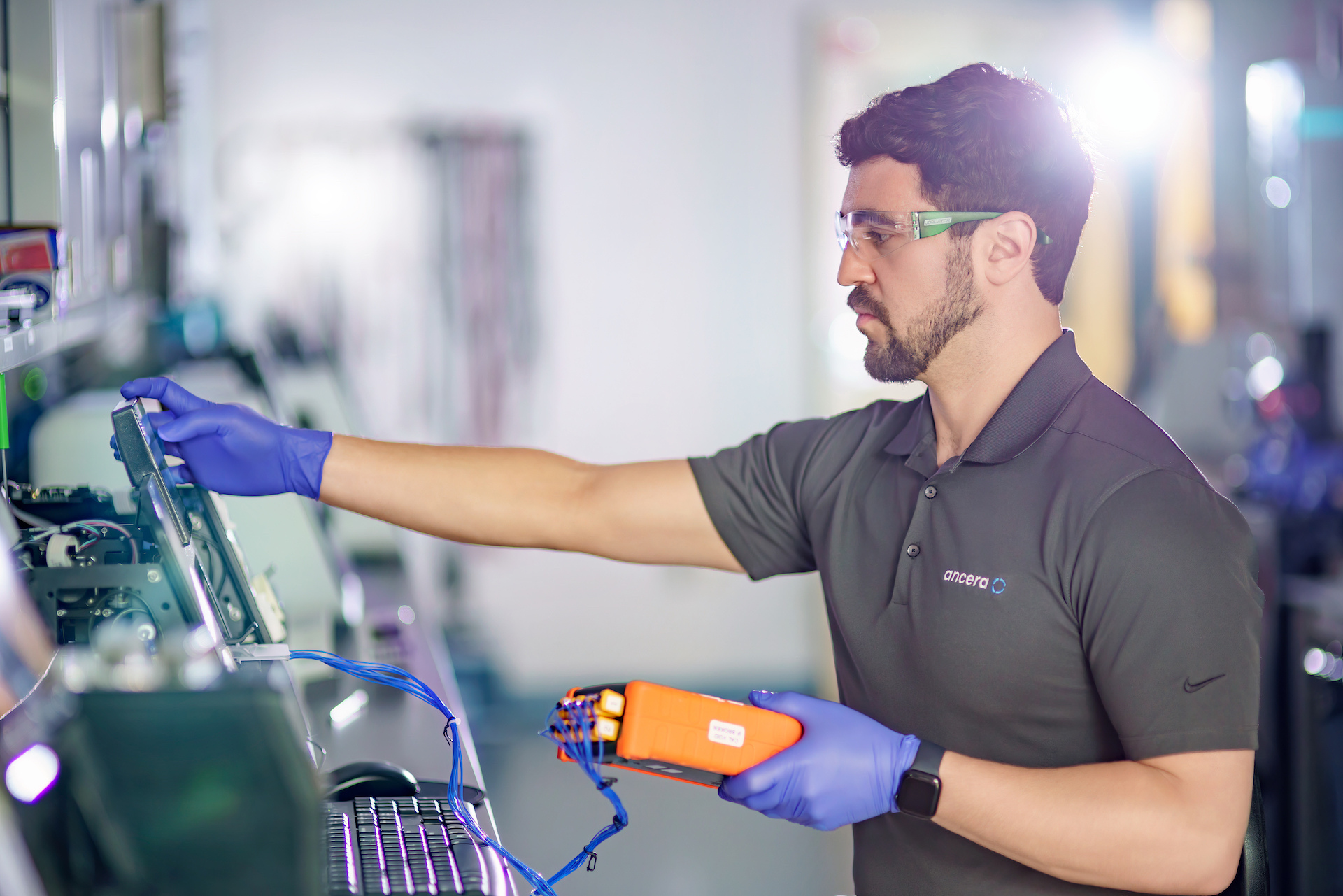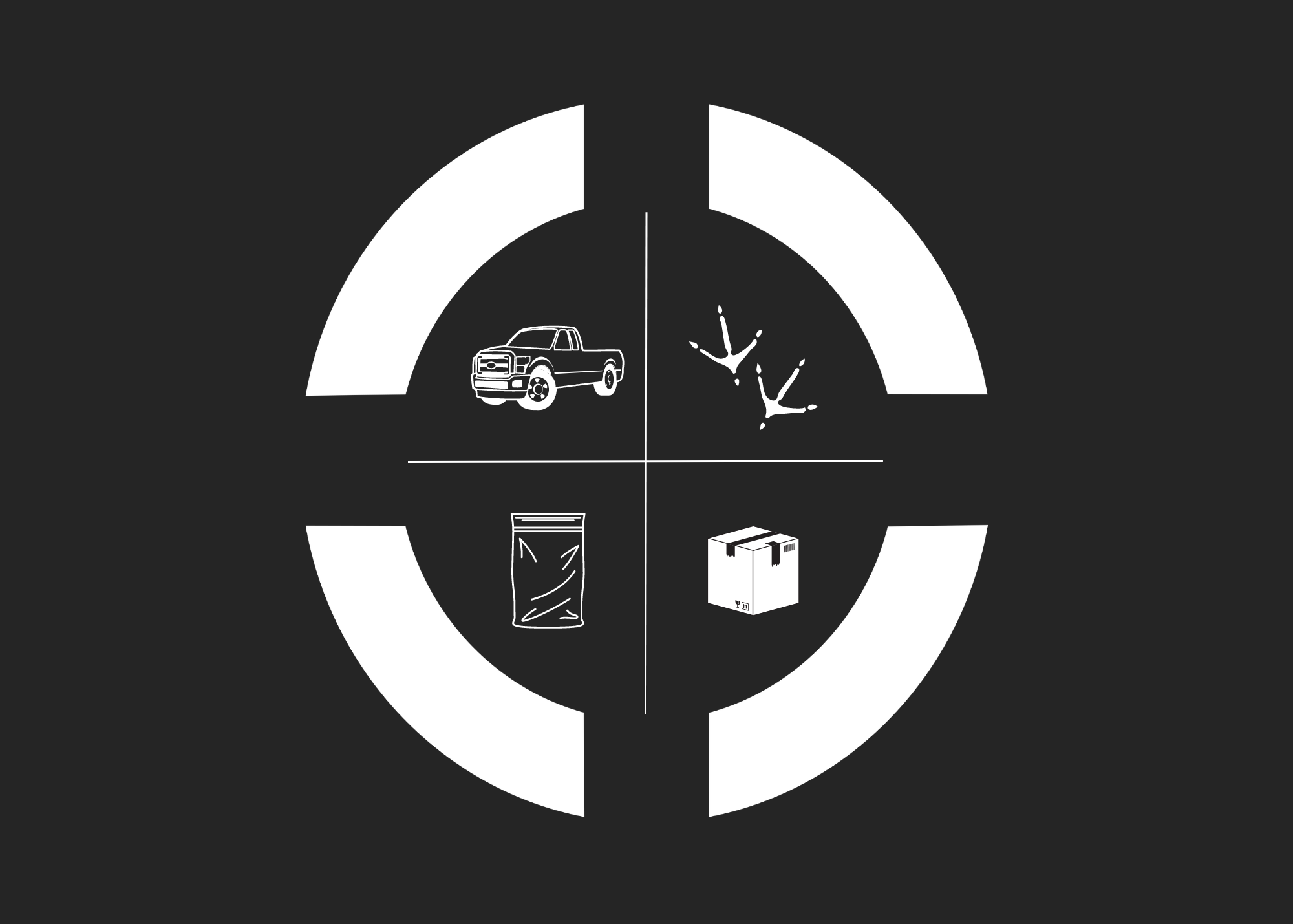In the poultry industry, margins are razor-thin, and every penny spent needs to pull its weight. For too long, poultry companies have leaned on diagnostics and contract labs as a crutch, ticking compliance boxes and relying on gut instinct to make important decisions. But outdated tools and guesswork does not make for a reliable strategy, and more tests aren’t the answer.

Publication
Crunching the Numbers: Behind the Scenes with Ancera (Part 3)
By Michael Lapides, Head of Marketing @ Ancera
How does Ancera turn chicken feces into valuable analytics?
In the final part of our series, I explore Ancera’s data science algorithms and the process that decodes the droppings to reveal insights into the millions of birds monitored each week. To learn more, I interview Charles Copley, Head of Data Science at Ancera.
In our previous Behind the Scenes blog post, Matt Zwilling gave us a glimpse into Ancera's Laboratories. We learned how proprietary assays and the PIPER instrument analyzed raw samples and quantified oocysts at scale. With the data now in the cloud, we delve into the final stage of the company's operations, which transforms animal waste into analytical gold.
Ancera’s mission to improve food productivity and safety cannot happen without analytics. In this final stage, we turn our novel diagnostic data into real-time visibility, integrate it with customer data, and produce the -insights needed to make decisions that ultimately reduce risk and increase margins.
Coccidia System Monitoring (CSM) is Ancera’s first end-to-end solution, quantifying coccidia cycling oocyst per Gram (OPG) counts over time for the complex, farms, and individual houses. Customers access real-time insights regarding animal performance across millions of broiler chickens each week — keeping pace with the production cycle and enabling actions that improve margins, efficiency, and health. This is where Ancera’s data science team plays a critical role transforming raw information into trends.
To learn more about the final stage in Ancera’s operations, I log into Zoom, a logical place to discuss cloud-based workflows, and interview our Head of Data Science, Charles Copley:
ML: Charles, thank you for your time and insight as we finish our Behind-the-Scenes series. Before we jump into data science and poultry analytics, tell me a bit about your background.
CC: Thanks Michael. I originally come from an academic background having completed my PhD in Experimental Astrophysics. I subsequently worked in Fintech, delivering bespoke credit scoring systems for underbanked populations. Later, I ventured into global health, building WhatsApp-powered public health messaging systems that the World Health Organization eventually used globally during the pandemic.
ML: When you think of public health and animal health, the public is well acquainted with diagnostics. How does Ancera’s analytics differ from raw information?
CC: Sure Michael, diagnostic data provide a single datapoint whereas analytics are about presenting the right information with a useful lens so someone using your product who is able to make a decision.
Consider it like a car: as you drive, you accumulate vast amounts of data. Those data can include your speed, the air pressure of your tires, whether or not your airbags are engaged. These are the equivalent of diagnostic data. As a driver though, you need warning lights and recommendations to help you drive safely and maintain a vehicle. For example, you need to be told that your tire pressure is low, or you’re driving too fast, or your airbags need to be checked.
We’re developing the warning lights and workflows for crucial productivity challenges in the poultry industry.
ML: I imagine there are practical trade-offs when choosing between monitoring every bird and employing representative approaches. How do you develop a sampling plan for our customers?
CC: This entire process starts with configuring our system to the customer’s needs so we can provide insight to their production system and answer ongoing investigations. That means applying a sampling methodology, a specific set of locations, and a cadence that statistically represents the broiler population, farms, and control programs they would like to monitor.
While it is commercially unfeasible to test every single broiler each day, we’ve developed a highly accurate data science algorithm that provides animal performance analytics across millions of birds every week. As you know from the preceding parts of our data generation process, raw information is generated from non-invasive fecal samples taken directly from the farms and oocysts are rapidly quantified in our lab.
ML: How does this scale to millions of birds each week? Tell me what happens after the samples are analyzed in the lab.
CC: All of our connected lab devices count and classify the oocysts and that data is made available to our data science and product teams via cloud-based internal tooling. It’s now our responsibility to turn those into representative models.
Using proprietary analytical frameworks, Ancera can unlock new trends and decisions that were previously unavailable in the Animal Ag industry, such as:
- Understand seasonality – Our systems can factor out the noise from seasonality such as weather.
- Conduct predictive maintenance – Legacy decision-making methods involve subjective assessments and calendar-based decisions. Alternatively, OPG counts allow you to make changes in control programs or management practice based on objective data.
- Precisely manage farms – All data science models account for the granularity of trends at the complex, farm, and house level. This allows for a deeper understanding, allowing decision-makers to understand if the trends they see represent the whole complex or a subset of farms. That is useful for investigating root cause analyses and optimization opportunities.
ML: The models are operating on a large scale and in near real-time. How do you validate the accuracy of the models?
CC: You’re referring to “ground truth”. We’ve tied clinical observations to our data, but the most useful data source is integrating production metrics, such as feed conversion. We’ve seen good correlation in the Coccidia patterns with FCR in the flock settlements. We can now provide advanced warning of impending performance declines weeks ahead of flock settlements. Conversely, we can identify overspending where products are not contributing to improved performance
ML: If I were the customer, how would I see these insights in the product? Can you walk me through the top three charts I should look at when I log in?
CC: It depends on your role, but we currently offer analytics through a secure and private reporting interface and mobile app. There are several reporting modules that help customers optimize their production for specific control programs.
In this example (figure 1), you can see a notional example of the OPG patterns at a complex where the birds are on vaccine. As expected, the total OPG count increases earlier in the grow-out as birds are exposed to the vaccine and develop immunity.

Alternatively, you can see OPG levels by farm. The heatmap chart (figure 2) is a customer favorite. The main benefit of the heatmap visualization is the ability to quickly understand your coccidia control trend: is it stable, getting better or getting worse? The color-coded visualization provides weekly trends at observed farms to compare performance.

ML: What information does this give customers that they didn’t have previously?
CC: Customers can now make decisions based on data rather than the turn of a calendar page.
The introduction of Internet of Things (IoT) data in manufacturing facilities, which enabled predictive maintenance based on trend analyses rather than scheduled repairs, significantly enhanced uptime and profitability. That's the parallel benefit we envision for the poultry industry.
When live operations teams can proactively identify and quantify production risks, they can know more precisely when and where to implement needed changes. Conversely, Ancera's analytics can identify opportunities for savings by highlighting instances where similar results could be achieved using more cost-effective products.
ML: Are there nuances in working with this data that are unique to the poultry industry?
CC: From a mathematical perspective, live production is an incredibly difficult problem to solve for. The typical variability between farms is much larger than many manufacturing industries have to deal with. At a basic level, poultry producers are dealing with both short production cycles and complicated biological interactions.
At the end of the day, our customers are in the business of creating value for consumers through affordable, abundant, and nutritious food. Ancera is well positioned to help food companies do what they do best by bringing a unique capability around real-time scalable monitoring.
ML: What advice do you have for poultry companies that are looking to modernize their workforces with data analytics technologies?
CC: I used to work in public health and the long-term trend in that industry is a move towards individually tailored treatments. I think there is a long-term opportunity within poultry to make decisions at a more granular level as the insights become increasingly granular. Previously, OPG data was difficult to get at high-cadence intervals across the complex and now we’re delivering that down to the house level.
We know that individual farm management is unfeasible for the majority of production managers. Our goal is to identify the opportunities where there are profit opportunities with incremental data-driven approaches.
Conclusion
Each stage of the work Ancera does behind the scenes requires innovative new approaches and scientific rigor. By offering the end product — powerful insights that improve margins — we not only provide valuable insights, but also a significant time savings. Operations managers can now reinvest time previously spent on clerical tasks and data collection into higher order decision-making.
When you have the facts, you are able to improve your production margins. Contact us here to learn how we can generate data science trends at your complex.










.png)






























